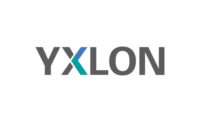Case Study
X-Ray Computed Tomography Expertise Helps Build a Business
Avonix Imaging helps educate the market on the advantages of this “largely untapped” technology.

Avonix sees applications for X-ray CT technology in about every object that’s manufactured. Source: Nikon Metrology

Avonix Imaging co-founders Jeffrey Diehm (left) and Brian Ruether (right). Source: Nikon Metrology

Avonix Imaging’s XT H 255 micro-focus X-ray CT system from Nikon Metrology (Brighton, MI). Source: Nikon Metrology



Akoan is a statement, question or phrase in Zen study designed to get a student to stop, contemplate, and hopefully progress and deepen his or her practice. “You don’t know what you don’t know” is more than a tricky catchphrase thrown out by Jeffrey Diehm and Brian Ruether, co-founders of Avonix Imaging (Plymouth, MN). It’s the foundation of their business life and how they approach their customers’ concerns.
“Let me paint the picture,” Diehm begins. “In the contract inspection world, X-ray computed tomography (X-ray CT) is a largely untapped technology. The pool of people uneducated to the advantages of X-ray CT is orders of magnitude bigger than the educated. And among the educated, those exposed to X-ray CT or even industrial CT operators themselves, a significant percentage are operating blind, unable to see or make use of the full potential in front of them because of a lack of training or a thorough understanding of the technology. Truly you don’t know what you don’t know.”
If these sound like words from the wise, it’s because Diehm and Ruether are top authorities where X-ray CT is concerned. In 1983, Diehm graduated from Spartan School of Aeronautics and moved to San Diego to work at General Dynamics Space Systems’ X-ray lab, performing X-ray inspections and interpretations on aerospace welding and avionics. From 1989 through 2001, he worked for WMW Associates in Los Angeles, a provider of industrial X-ray cabinets and systems, in a sales management and ownership position. Joining North Star Imaging (Rogers, MN) in 2001 as the western regional sales manager, specializing in sales of NSI’s systems, he moved to Minnesota four years later to launch NSI’s Inspection Services Group (ISG). From its inception, NSI’s inspection services arm grew to a position of national prominence in the industrial X-ray and CT imaging field based in large part on Diehm’s expertise and focus on customer service.
Brian Ruether has nearly 25 years in the industrial X-ray industry. After graduating from Ridgewater College in 1989, he went to work for the Product Improvement Laboratory at Goodrich Aerospace (Burnsville, MN), performing digital X-ray imaging services on a variety of aerospace components for both quality control and failure analysis. From 1995 until 1998, Ruether worked for Scientific Measurement Systems (Austin, TX) as an application/project engineer. SMS pioneered the field of industrial computed tomography, developing both hardware and software. During Ruether’s SMS tenure, he helped develop and deploy computed tomography systems used in facilities worldwide across a wide range of industries. He joined North Star Imaging (NSI) in 1998 and started NSI on the path to systems development and manufacturing. During his 14-year tenure as vice president of operation and technology, NSI became a leading developer and manufacturer of industrial X-ray imaging and computed tomography imaging solutions in the United States.
In short, Diehm and Ruether see themselves bringing worldwide reputations to a compact industry niche (X-ray CT contract inspection) and bringing about a “big bang” of growth. “We absolutely see the growth potential of X-ray CT,” Diehm explains. “In just about anything that’s manufactured, there are applications for CT technology.”
Why It’s So
The Avonix Imaging partners point to many reasons, based both in equipment advances and external business issues, largest among them the exponential gains in computing power and the accompanying price reductions. “X-ray CT currently occupies an exceptional price/performance position,” Diehm says.
Ruether adds that developments in Avonix’s choice of X-ray CT equipment, the XT H 225 micro focus X-ray CT system from Nikon Metrology (Brighton, MI) are notable. “The X-ray tube technology and innovative internal chilling design go a long way to increasing reliability from a performance perspective,” he says. Demountable, pump-down microfocus X-ray tubes can be high-maintenance, typically requiring frequent periodic maintenance and downtime. “Literally on our new equipment, we haven’t done anything except change the filament. It’s like having a car that requires an oil change every 10,000 miles vs. every 1,000 miles.”
Critical Customer Needs
Established in early 2012, Avonix Imaging has already garnered a reputation for exceptional customer support of critical projects involving first-article inspection, failure analysis, reverse engineering, part comparisons to CAD model data, and other metrology assignments. Diehm illustrates the critical and time-sensitive nature of their customer requirements by relating the story of a defense contractor who needed CT data on a component within 24 hours. “I was literally speaking with people from the Defense Department who were making it extremely clear that this problem was affecting troops in the field and that they needed us to do something extraordinary,” he says. “With our equipment and our passion for customer service, we were able to show them what they needed to see in the timeframe they needed to see it.”
As lofty as their technical experience is, Diehm’s and Ruether’s ambitions for their business and customer service are even higher. “All of us exist in that ‘you don’t know what you don’t know’ area at some point,” Diehm explains. “Once a company experiences X-ray CT, they passionately start searching for more ways to apply it. Even manufacturing companies that buy CT equipment of their own run into obstacles when the widgets they were scanning change or differ and they need our help improving their CT skill sets. People don’t necessarily seek us out because everything’s coming up roses. In these cases and more, we’re here to help raise the standard.”
“CT back in the ‘90s took many hours or even days to produce results, where today more powerful images and data are produced in minutes,” Ruether adds. “Detector technology, equipment design, inspection software and computing power will all continue to move forward.” All proving that not knowing what we don’t know does not have to be a permanent condition.
X-ray CT BasicsX-rays are at the short end of the electromagnetic spectrum with an average wavelength between 10-8 and 10-12 meters, around the size of water molecules, compared to radio waves with wavelengths that could span a soccer field. There are no radioactive sources in X-ray micro CT, rather electrons are produced from a hot filament similar to a light bulb and accelerated at high voltage, creating a beam of electrons reaching speeds up to 80% of the speed of light. The electron beam is focused by a magnetic lens onto a metal target, producing a spot typically between 1 to 5 microns in diameter. The sudden deceleration of the charged electrons when they hit the metal target produces 99.03% heat and 0.7% X-rays. These X-rays emanate from the region where the electron beam hits the target. The size of this spot is referred to as the X-ray spot size or focal spot. In general, the higher the voltage applied, the more power is in the beam, and consequently more power is transferred to the target. The more power on the target, the larger the X-ray spot size, and the more X-ray flux produced. X-rays travel in a straight line, through the object being inspected, and onto a detector. The object will attenuate some of the X-rays (denser objects attenuating more), leaving only a portion to reach the detector. At low X-ray energies (<60kV), differences of attenuation along the X-ray path to the detector are detected and shown as a shadow image. At higher X-ray energies (60 to 225kV), attenuation and scatter occurs. This scatter generally reduces contrast in the image. With X-ray energies above 225kV, scatter becomes an increasing problem for certain detectors. Above 225kV, scatter can be rejected from the detected signal by a linear detector, although throughput decreases (fewer images per hour). And at greater than 300 to 400kV, scatter is the dominant contrast mechanism, i.e., more X-rays leave the beam from scatter than from absorption. Amorphous silicon flat-panel detectors have a fluorescent screen which converts the X-ray energy into light to form an image on an array of light-sensitive diodes. Electronics allow this image to be read by a computer. These panels can have pixel sizes over a wide range and sensitivities up to 16 bits (64k grey levels). The resolution of the detector relates in part to the size of the X-ray source. Many typical high-power X-rays sources are minifocus, in the range of 1 millimeter across. This limits the resolution of images to that of the detector: a very fine detector is needed to get high resolution when no magnification is possible. Microfocus means the size of the X-ray source is only a few microns across (1 micron (µm) is 1/1000th of one millimeter). With a microfocus source, geometric magnification is utilized with a standard detector that can be used to gain an image with much higher spatial resolution. |
Nikon Metrology
Looking for a reprint of this article?
From high-res PDFs to custom plaques, order your copy today!








